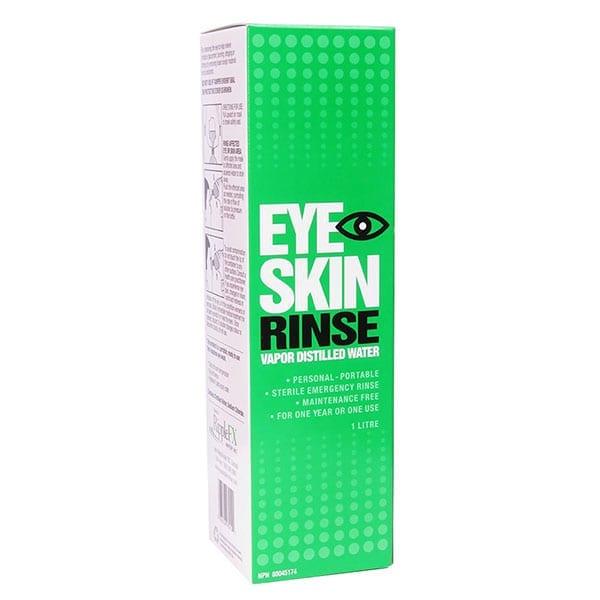Table of Contents
- Safety Alert Highlights Importance of Immediate Cooling Rinse After Skin or Eye Exposure
- Understanding the Risks of Chemical and Environmental Irritants on Skin and Eyes
- Step-by-Step Guide to Proper Rinsing Techniques for Effective Decontamination
- Expert Recommendations for Preventing and Managing Exposure-Related Injuries
- To Wrap It Up
Safety Alert Highlights Importance of Immediate Cooling Rinse After Skin or Eye Exposure
Immediate rinsing with cool water can dramatically reduce the severity of injuries caused by chemical or irritant exposure to the skin or eyes. Safety protocols emphasize the necessity of initiating a cooling rinse within seconds of contact to dilute and remove harmful substances before they penetrate deeper tissues. This quick action often prevents lasting damage and significantly aids in the healing process.
Key practices recommended by safety experts include:
- Using gently flowing, cool water rather than harsh sprays to avoid aggravating affected areas.
- Continuing to rinse for a minimum of 15 minutes, ensuring thorough flushing of contaminants.
- Seeking immediate medical attention after rinsing to evaluate any residual effects or complications.
Adherence to these guidelines is critical in workplace environments handling hazardous materials, as it minimizes risk and supports employee health. Organizations are urged to prioritize accessible emergency rinsing stations and staff training to uphold these life-saving measures.
Understanding the Risks of Chemical and Environmental Irritants on Skin and Eyes
Chemical and environmental irritants present in everyday products and surroundings can cause immediate and long-term damage to the skin and eyes. Exposure to substances such as household cleaners, industrial solvents, airborne pollutants, and even certain cosmetics often results in redness, itching, and inflammation. In severe cases, contact with harsh chemicals may lead to burns or vision impairment. Understanding these risks is crucial for timely and appropriate response to minimize harm.
Upon contact with irritants, it is critical to act swiftly by rinsing the affected areas with cool, clean water. This simple yet effective first aid measure helps to dilute and remove harmful agents quickly, reducing the likelihood of prolonged irritation and complications. Key steps to remember include:
- Flush the skin or eyes continuously for at least 15 minutes to ensure thorough cleansing.
- Avoid rubbing the affected area, as this can exacerbate irritation or cause further damage.
- Seek professional medical help when symptoms persist or worsen despite initial rinsing.
Step-by-Step Guide to Proper Rinsing Techniques for Effective Decontamination
When decontaminating skin or eyes after exposure, it is crucial to act swiftly yet carefully. Begin by directing a gentle stream of cool, clean water to the affected area to avoid aggravating the injury. For skin contact, rinse thoroughly for at least 15 minutes, ensuring all contaminated substances are washed away. When dealing with eye exposure, hold the eyelid open wide and flush the eyes continuously to prevent residual chemicals from causing lasting damage. Avoid using hot water or high-pressure streams, as these can exacerbate irritation and compromise the skin’s protective barrier.
- Remove contaminated clothing and jewelry immediately to prevent further absorption.
- Maintain rinsing at a steady pace; do not stop prematurely.
- Use an emergency eyewash station if available for eye decontamination.
- Seek medical attention promptly after rinsing, even if symptoms subside.
Proper rinsing is a vital step in minimizing chemical injuries and preventing long-term harm. Emphasizing the use of cool water and sufficient duration ensures contaminants are effectively diluted and removed. Implementing these steps with precision plays a key role in promoting recovery and safeguarding against secondary exposure risks in emergency scenarios.
Expert Recommendations for Preventing and Managing Exposure-Related Injuries
Immediate action following exposure is critical to minimize injury severity. Experts emphasize the importance of promptly rinsing affected skin and eyes with cool, clean water to dilute and remove harmful substances. This should be done continuously for at least 15 minutes, ensuring that the water flows away from the body to prevent further contamination. In workplace environments, access to emergency eyewash stations and safety showers must be ensured and regularly maintained to facilitate this essential first response.
In addition to flushing, implementing these precautionary measures can significantly reduce the risk of long-term damage:
- Wear appropriate personal protective equipment (PPE), such as gloves and goggles, when handling hazardous materials.
- Conduct regular safety training to reinforce proper exposure response techniques.
- Keep Material Safety Data Sheets (MSDS) readily available for quick reference.
- Seek immediate medical evaluation even when symptoms appear mild, as some injuries worsen over time.
To Wrap It Up
In summary, immediate rinsing of the skin and eyes with cool water following exposure to harmful substances is a critical step in preventing further injury and mitigating adverse effects. Individuals and workplaces alike should prioritize awareness and preparedness to respond swiftly in such situations. Staying informed and acting promptly can significantly enhance safety outcomes and preserve health.Check Our Other Blogs
- StunGun – Your Trusted Source for Stun Guns, Laws, and Self-Defense Tips
- PepperSprayLaws – Your Trusted Resource for Pepper Spray Information
- StunGunLaws – Your Trusted Guide to Stun Gun Legality and Safety




